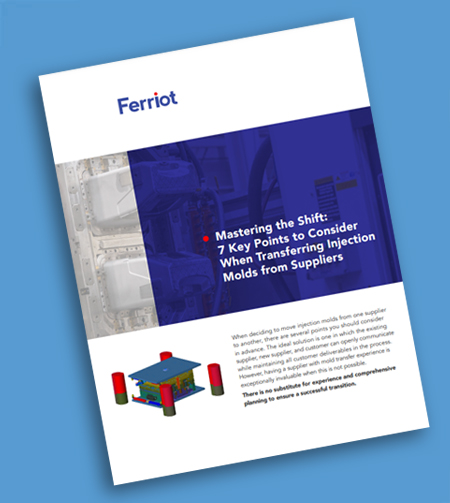Design engineers and their employers have shifted focus from the days when their company created an injection-molded part, turned it over to a contract manufacturer, and the purchasing department followed-up on delivery.

For production quality, cost control and innovative solutions, design engineers and their companies now seek vendor-as-partner relationships. The exchange of knowledge between designer/company and vendor creates an inclusive goal set, including part design/optimization, tooling modifications or simplifications, cost containment, just-in-time delivery and special finishes. The result is a vendor who can “fill the gaps” in the company’s capabilities to identify positive, proactive opportunities beyond the customer’s RFQ.
A Customer’s Journey
One customer shifted their focus when they needed help in creating parts for a redesign of one of the company’s top sellers.
“We look for vendors with experience in areas of injection molding we need.” The material manager found a vendor that had molded faceplates for ATMs and gasoline pumps which would withstand extreme conditions like temperature changes and chemical exposures. The material manager explained “These products the vendor created were rugged, and even after exposure to the elements, the finish still looked great. Our product would never be in those conditions, but they had the experience to develop quality and durable products for those industries. They certainly have the technology to develop products for us.”
Qualifying the Vendor
Qualifying multiple vendors for key injection molding is standard. The first reason for having a contingency plan is obvious: preparing in the event of unexpected major equipment failure, fire, work stoppage or other disaster.
A second qualifying practice makes good economic sense. This customer screens alternative suppliers for comparative price checks. Customer finds “Price protection is a thing of the past; every price is subject to change based on every little market whim. Without market index pricing with a particular vendor, I need to confirm pricing, and I do that with a second vendor source. If one vendor claims a price increase, I want to see that market adjustment with all my sources.” The customer is reasonably wary about price increases, “Sometimes, frequent price increases may indicate a vendor’s processes are faulty, creating too much scrap, for example.”
Vendor to Partner: The Journey
For this customer, they were able to identify their critical characteristics for an injection molding partner:
- Vendors with relative expertise in injection molding design techniques for a particular part of a project.
- Vendors who have earned both the respect and the business of other leading companies.
- Vendors who are responsive. Well-informed and prepared with a multi-disciplinary team.
- Vendors who work with product designers to realize the possibilities.
- Vendors who help customers do their jobs efficiently.
Keep reading this case study that shows the company’s selection process in finding that responsive, reliable and innovative vendor partner. Download the entire study, to learn more about the targeted questions they asked of vendors, and how they found and developed the vendor-as-partner relationship to support their direct injection-molding needs. Find best practices in evaluating direct injection molding vendors you can apply today.
Read and download the Case Study now!



